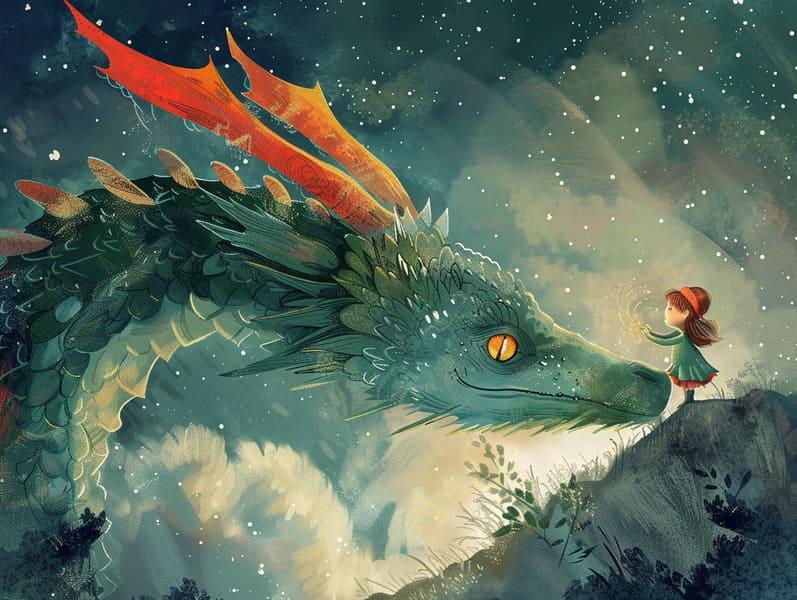The Evolution of Short Fairy Tales and Their Unceasing Charm.
The Evolution of Short Fairy Tales and Their Unceasing Charm.
Blog Article

Short fairy tales have long histories. These tales have been transmitted from one generation to the next long before they were ever put on paper. They were born from a variety of backgrounds, including European traditions. They were initially transmitted among mature audiences, often carrying themes and messages reflective of the societal norms and beliefs of the time.
The Grimm brothers, Jacob and Wilhelm, were among the first to collect and release many of these beloved tales. Their published works, "Grimm's Folk Tales," included classics like "The Story of Cinderella," "Hansel and Gretel," and "Snow-White and Rose-Red," which have since become pillars in the world of timeless fairy tales. Similarly, H. C. Andersen's fanciful tales, such as "The Mermaid's Tale," and "The Story of the Ugly Duckling," have floated into hearts worldwide, guaranteeing their place in the pantheon of timeless fairy tales.
Despite their age, these stories remain as relevant as ever, especially as kids' bedtime tales. These charming stories are now available in multiple formats, including vividly illustrated books, delightful animations, and internet fairy tales.
Their lasting appeal can be linked to several whimsical characteristics:
Life Lessons: Timeless fairy tales often whisper important moral lessons. Fairy tales like "The Shepherd Boy and the Wolf" teach the value of being truthful, while "The Hare and the Tortoise" illustrate the merits of resolve and humbleness. These narratives offer kids clear distinctions between good and bad, forming their moral compass in a tender yet significant way.
Sympathy and Perception: Ancient fairy tales frequently involve protagonists facing obstacles and hardships, fostering young readers to feel with their struggles and applaud their triumphs. For instance, "Beauty and the Beast" highlights the value of looking past the exterior to acknowledge the inner core of a soul, advancing perception and comprehension.
Cultural Recognition: Many classic fairy tales are deeply ingrained in the cultural contexts from which they sprang. Reading these stories can provide intriguing perspectives into different social structures, developing a sense of global awareness and understanding.
Inventiveness and Imagination: The imaginative elements in fairy tales—magical beings—enliven children’s creativity. These tales lead readers to mythical realms, engendering imaginative thinking and a sense of amazement that lasts a lifetime.
Classic fairy tales are not only fascinating but also teaching. They act as whimsical tools in promoting various brain and heart skills in kids. When classic fairy tales are spoken, they nurture language acquisition by offering new linguistic elements and sophisticated sentence structures. This practice also develops listening abilities and mindfulness, as young ones stay focused, expectant to see what happens next.
Furthermore, conversing about the themes and characters of classic fairy tales can sharpen thought processes and cognitive skills. The young are shown to recognize patterns, anticipate outcomes, and figure out cause and effect. These talks also help young ones express their thoughts and feelings, enhancing their emotional these guys intelligence.
In today’s digital era, the existence of digital storybooks has made these narratives more attainable than ever. Internet resources and applications extend wide arrays of bedtime fairy tales that can be explored or played anytime, anywhere. Fairy tales recited are particularly common, giving an immersive method for children to take part in these magical stories. Audiobooks and read-aloud videos bring characters and settings to life, often joined by enchanting background sounds and songs that improve the story adventure.
The timeless appeal of ancient fairy tales lies in their ability to shift to the present while keeping their key morals. Contemporary modernizations of these fairy tales often spotlight more diverse protagonists and modern settings, making them relatable to today’s audience. However, the key lessons of guts, humanity, and fair play remain unchanged, continuing to touch children of all ages.
Traditional fairy tales also offer a sense of solace and closeness. They render accessible a methodical narrative with a evident beginning, middle, and end, often closing with the wrap-up of conflicts and the triumph of virtue over corruption. This consistency can be easing for little ones, imparting a sense of dependability in an shifting world.
Old fairy tales continue to charm and instruct new generations, maintaining their attraction and applicability in modern society. As nighttime stories for kids, they put forth a perfect blend of fantasy and learning, nourishing moral values, empathy, and creativity. The prevalence of digital storybooks and the well-received status of fairy tales recited make sure that these timeless tales remain available to new generations.
By protecting and spreading these stories, we continue to esteem the rich tapestry of inventiveness and cultural heritage. Whether you are discovering a vibrantly illustrated book, viewing a online library, or hearing an spoken story, the appeal of popular fairy tales is always within reach. These stories show us of the unwavering nature of storytelling and its ability to bind us across eras and regions.
If you are perusing a artistically illustrated book, discovering a digital collection, or listening through an narrated book, the allure of old fairy tales is always within reach.
These tales show us of the immortal effect of stories and its ability to gather us across epochs and places, weaving a spell that charms and informs alike.